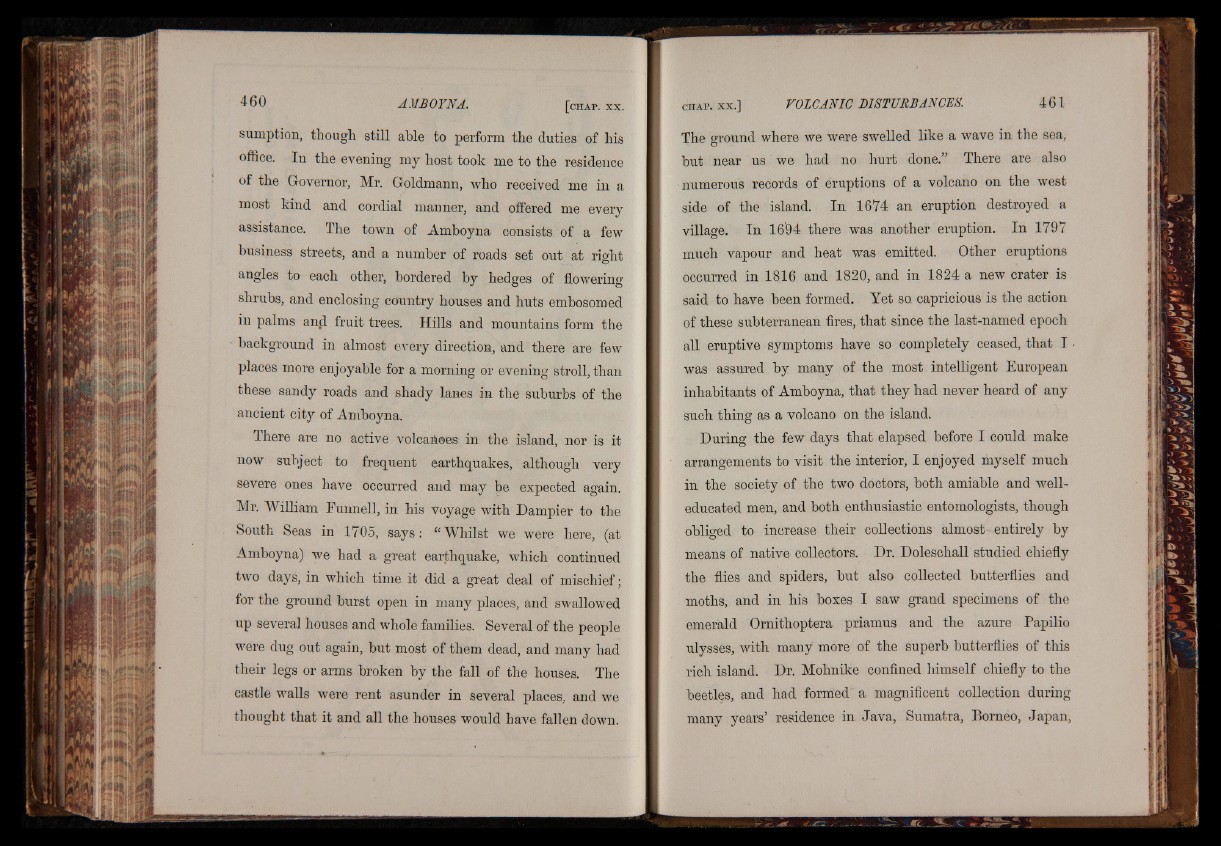
sumption, though still able to perform the duties of his
office. In the evening my host took me to the residence
of the Governor, Mr. Gpldmann, who received me in a
most kind and cordial manner, and offered me every
assistance. The town of Amboyna consists of a few
business streets, and a number of roads set out at right
angles to each other, bordered by hedges of flowering
shrubs, and enclosing country houses and huts embosomed
in palms antd fruit trees. Hills and mountains form the
background in almost every direction, and there are few
places more enjoyable for a morning or evening stroll, than
these sandy roads and shady lanes in the suburbs of the
ancient city of Amboyna.
There are no active volcanoes in the island, nor is it
now subject to frequent earthquakes, although very
severe ones have occurred and may be expected again.
Mr. William Funnell, in his voyage with Dampier to the
South Seas in 1705, says: “Whilst we were here, (at
Amboyna) we had a great earthquake, which continued
two days, in which time it did a great deal of mischief;
for the ground burst open in many places, and swallowed
up several houses and whole families. Several of the people
were dug out again, hut most of them dead, and many had
their legs or arms broken by the fall of the houses. The
castle walls were rent asunder in several places, and we
thought that it and all the houses would have fallen down.
The ground where we were swelled like a wave in the sea,
but near us. we had no hurt done.” There are also
numerous records of eruptions of a volcano on the west
side of the island. In 1674 an eruption destroyed a
village. In 1694 there was another eruption. In 1797
much vapour and heat was emitted. Other eruptions
occurred in 1816 and 1820, and in 1824 a new crater is
said to have been formed. Yet so. capricious is the action
of these subterranean fires, that since the last-named epoch
all eruptive symptoms have so completely ceased, that I
was assured by many of the most intelligent European
inhabitants of Amboyna, that they had never heard of any
such thing as a volcano on the island.
During the few days that elapsed before I could make
arrangements to visit the interior, I enjoyed myself much
in the society of the two doctors, both amiable and well-
educated men, and both enthusiastic entomologists, though
obliged to increase their collections almost entirely by
means of native collectors. Dr. Doleschall studied chiefly
the flies and spiders, but also collected butterflies and
moths, and in his boxes I saw grand specimens of the
emerald Ornithoptera priamus and the azure Papilio
ulysses, with many more of the superb butterflies of this
rich island. Dr. Mohnike confined himself chiefly to the
beetles, and had formed a magnificent collection during
many years’ residence in Java, Sumatra, Borneo, Japan,